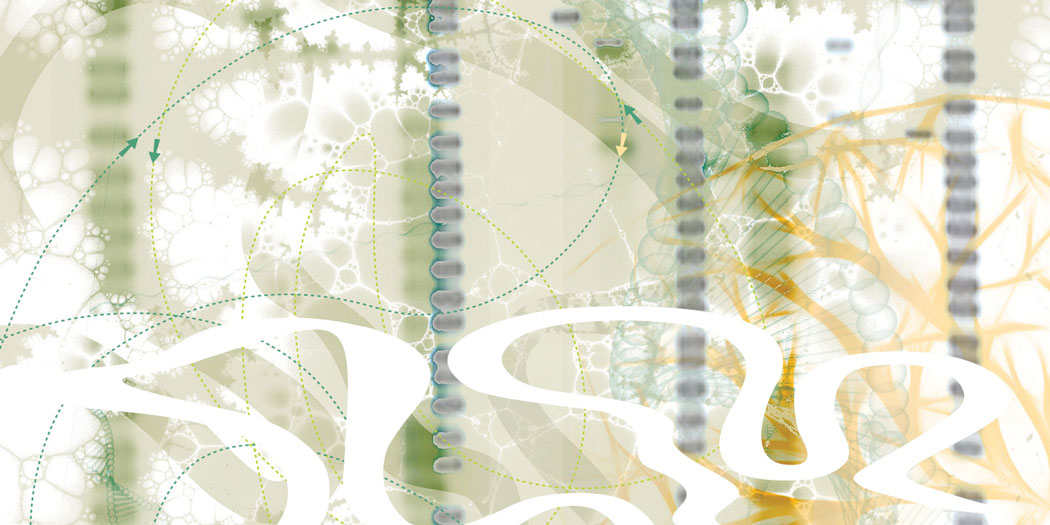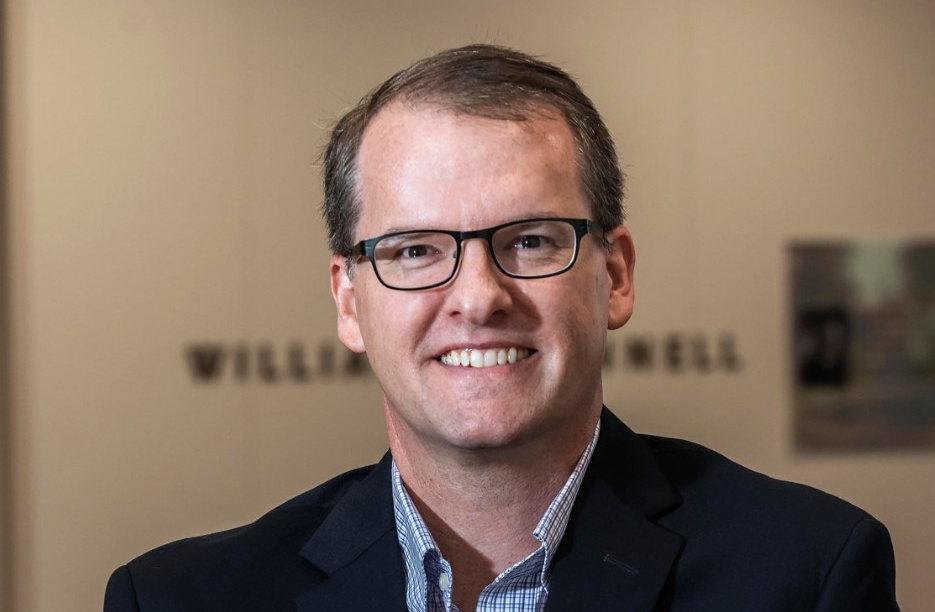


Interim Associate Dean Andrew Dwyer’s quest to help people with rare diseases
Dwyer has focused much of his research on one, congenital hypogonadotropic hypogonadism (CHH), which prevents the normal onset of puberty. But his ultimate goal is to use the knowledge he acquires studying CHH to develop tools and strategies that support people with a wide range of rare diseases.
His mission could have a broad impact. While the prevalence of any given rare disease is exceedingly small, the collective community of people who with live these uncommon conditions in the United States totals 25–30 million, or roughly the population of the state of Texas. “These patients face health disparities, much like many other marginalized groups,” says Dwyer. “They have difficulty accessing care. They often go without treatment or cure.”
To be sure, patients with rare diseases frequently experience what’s known as a “diagnostic odyssey,” he says, wandering from one puzzled specialist to another, who misdiagnose their condition or throw up their hands. It can take years for a person with a rare disease to find a physician who identifies the source of his or her mysterious symptoms. Worsening matters, people who have uncommon chronic conditions usually don’t know anyone else with the same (or a similar) diagnosis, and that can cause a profound sense of isolation.
Dwyer’s goal is to help patients with rare diseases find care and make informed treatment decisions. And, in fact, CHH is a rarity among rare diseases, since therapy can correct the hormonal deficiency that causes it. However, Dwyer’s research has found that patients and their doctors don’t always agree on the definition of success in treating CHH.
In his research, Dwyer collaborates with clinicians and researchers around the world. But he also seeks the voices and views of patients, including one who has become a collaborator on several journal articles. “I might understand the genetics and the pathophysiology and the pharmacology of treating CHH,” says Dwyer, “but I don’t know what it’s like to live with it.”
7.6
Average number of years it takes a person with a rare disease to get the proper diagnosis in the United States; in the United Kingdom, it’s 5.6 years.
8
Average number of physicians a person with a rare disease consults before getting an accurate diagnosis—four primary care doctors and four specialists.
2–3
Number of times a rare condition is typically misdiagnosed
Source: Rare Disease Impact Report: Insights from Patients and the Medical Community, Shire Human Genetic Therapies.

Andrew Dwyer. Photo: Lee Pellegrini
Dwyer grew up in upstate New York and attended Cornell University, where he received a Bachelor of Science degree in Human Development and Family Studies in 1992. He later moved to Boston and, in 2000, obtained a master’s degree in nursing at the MGH Institute of Health Professions, which last year named him the recipient of its annual Bette Ann Harris Distinguished Alumni Award.
A newly minted family practice nurse practitioner, he next applied for a job as a research assistant/coordinator for Massachusetts General Hospital’s Reproductive Endocrine Unit. “They had never heard of a nurse practitioner. I had to explain what that was,” he says, recalling a memory that never fails to get a laugh from his students.
Dwyer got the Mass General job and worked closely with William F. Crowley Jr, MD, chief of the unit and one of the world’s leading experts on CHH.
Normally, puberty starts when the brain begins producing gonadotropin-releasing hormone (GnRH), which sets off a cascade of events resulting in the release of testosterone and estrogen, the hormones that are necessary for transforming children into grown-ups. People with CHH are deficient in GnRH; as a result, the process of morphing from child to adult either doesn’t happen or, less often, it starts but soon halts. However, because there is wide variation in the age at which natural puberty begins, young people with CHH are often dismissed as “late bloomers” and go undiagnosed. “These patients are often identified when they’re 18 or in their early 20s, and they look like they’re 12,” says Dwyer.
CHH occurs in one out of every 4,000 to 10,000 births. For some reason, males are four times more likely than females to be diagnosed with the disorder. Roughly half of people born with GnRH deficiency have total or partial loss of their sense of smell, and are classified as having Kallmann syndrome.
Living with undiagnosed CHH can be scarring. Young people who don’t mature sexually are often teased and can feel like social outcasts. And failure to produce sex hormones results in lack of libido and infertility. “The cumulative effects can be really traumatic,” says Dwyer.
At MGH, Dwyer cared for patients with reproductive endocrine conditions while also playing a pivotal role in groundbreaking research on CHH. “Dr. Dwyer is an extraordinary team player and leader,” says reproductive endocrinologist Ravikumar Balasubramanian, MBBS, who treats CHH patients at MGH and worked closely with Dwyer, a collaboration that continues. Dwyer coordinated research by an interdisciplinary team that discovered a number of genes associated with the conditions (there have been about 40 identified to date). He was also the lead author of a 13-year study (published in the Journal of Clinical Endocrinology and Metabolism in 2013) that discovered a new, effective pharmacological regimen for inducing fertility in men with CHH. “We are here to alleviate human suffering,” says Balasubramanian, “and I think Andrew truly has been a torchbearer of that mission.”
“ A lot of these patients are still trapped by the psychosocial impact of being totally different for their whole lives. You can correct the hormone level, but it doesn’t make the patient all better. ”
In that pursuit, Dwyer has worked not only to help patients with rare diseases help themselves but also to mine their experience to better understand their conditions. “My goal is to partner with patients and co-create robust solutions together,” Dwyer adds.
Dwyer’s focus on that work became more acute in 2010, when an MGH colleague, Nelly Pitteloud, MD, was named chief of endocrinology at the University Hospital of Lausanne, Switzerland. Dwyer agreed when Pitteloud invited him to help her start a clinic for young people transitioning from pediatric to adult care and do research. “It was supposed to be 18 months and ended up being seven years,” says Dwyer, who made the trans-Atlantic move with his wife, Krista Chavez (also a nurse practitioner), and their then-toddler daughters, Julia and Mia.
While in Switzerland, Dwyer and his colleagues received a grant from the European Cooperation in Science and Technology (COST) organization to establish a consortium of 130 scientific investigators and clinicians from 26 countries who were interested in CHH and Kallmann syndrome, along with a goal of promoting collaboration among researchers.
Through his work with the COST network, Dwyer met Neil Smith, a Briton from just outside London who has Kallmann syndrome and had become an advocate for others with the disorder. A partnership, and friendship, was born. “Andrew is so in tune with patients” who have CHH and Kallmann syndrome, says Smith. “He understands how patients feel about having the condition. He listens. He tries to find ways to help people cope.”
Working with his colleagues in the COST network, Smith, and other patients, Dwyer led the development of a patient-empowerment “toolkit” for people with CHH. Translated into 20 languages, the kit contains materials that explain the disorder in lay language, information on finding treatment and genetic testing, and links for peer-to-peer support. Dwyer hopes that the toolkit, available online and through providers, will become a “roadmap” for others who hope to create patient-education materials for other rare diseases.
Smith also helped Dwyer find 105 men with CHH who agreed to take an online survey that asked them about their unmet health needs. The results of the survey formed the basis of Dwyer’s dissertation—he received a doctorate in nursing from the University of Lausanne in 2014—as well as a paper published that year in the Orphanet Journal of Rare Diseases.
The survey found that many CHH patients are frustrated by their care. To an endocrinologist, hormone-replacement therapy used to treat CHH may appear to be a success if the patient develops the hallmarks of puberty, such as enlarged genitals and muscles, growth of body hair, a deeper voice, and a heightened libido. What’s more, 75 to 80 percent of men with CHH can father children
Yet about one-third of people with CHH struggle with moderate-to-severe depression. “A lot of these patients are still trapped by the psychosocial impact of being totally different for their whole lives,” says Dwyer. “You can correct the hormone level, but it doesn’t make the patient all better.” Doctors who treat CHH patients must be aware that many will benefit from mental health counseling, he says.
60%
Portion of people with rare diseases in the United States who say they received conflicting information about treatment options from physicians.
83%
Portion of people with rare diseases who worry about the lack of information available on their condition.
50%
Quality-of-life ratings are half as high for people with rare diseases as for others.
Source: Rare Disease Impact Report: Insights from Patients and the Medical Community, Shire Human Genetic Therapies.
In 2017, Dwyer and his family returned to the United States when he joined the faculty at the Connell School. He quickly found collaborators on campus. Dwyer is currently working with Min Zhao, an associate professor at the Carroll School of Management, to develop a decision aid that uses behavioral economics to help people with inherited conditions make choices about undergoing genetic testing, work funded by a University Research Across Departments and Schools grant. Such a tool could benefit patients with CHH and other rare diseases, says Dwyer, as well as more common hereditary diseases, such as certain forms of breast and ovarian cancer.
In addition, Dwyer has received a grant from the National Institutes of Health to investigate a mystery: Why do some CHH patients undergo spontaneous reversal of the condition? Dwyer and colleagues at MGH first discovered in the 2000s that about 10 to 20 percent of patients can stop taking hormone-replacement therapy and maintain normal levels of sex hormones (though some relapse). Identifying predictors of reversal, such as specific gene mutations, for instance, could dramatically alter how CHH is treated. “We could potentially trigger reversal, rather than put people on lifelong therapy,” says Dwyer.
Dwyer still works with Smith, though the coronavirus pandemic has forced some changes in their advocacy efforts. In the past, Smith frequently traveled to Massachusetts, staying with Dwyer and his family, and the two would co-lead meetings for CHH patients. That’s not possible today, but Dwyer notes a silver lining in the move away from in-person meetings to gatherings held via video conferencing: their last three virtual meetings had 62 participants from 14 countries, while their previous six live events attracted a total of 54 attendees. “We’re leveraging the power of the internet,” says Dwyer, “to reach these geographically dispersed rare disease patients.